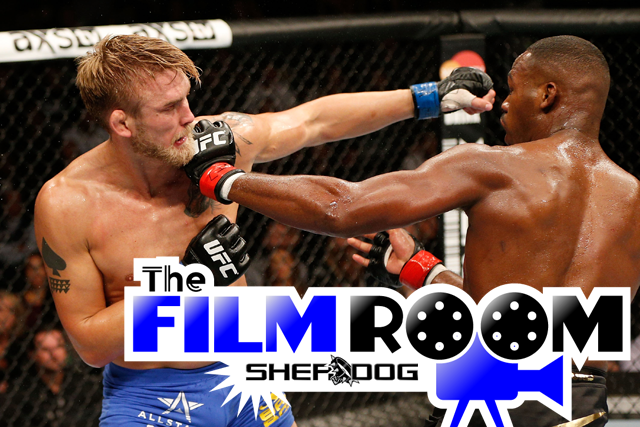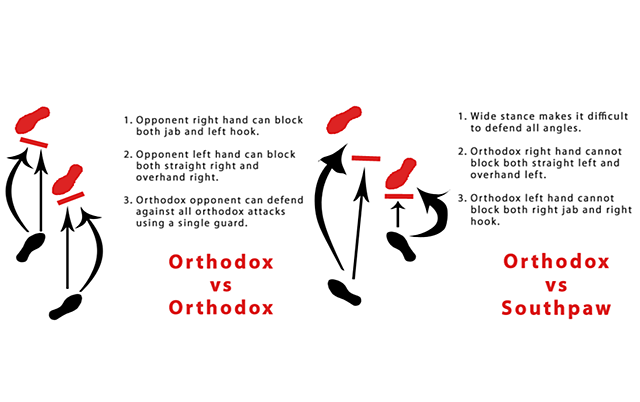The Film Room: Ideal Adjustments for Jon Jones, Alexander Gustafsson

UFC 232 is now available on Amazon Prime.
Jon Jones and Alexander Gustafsson return to the Octagon this Saturday for the first time since the summer of 2017 in a UFC 232 rematch that has been five years in the making. The two engaged in a close fight back in 2013 that saw Jones win via unanimous decision. However, Gustafsson gave “Bones” the toughest fight of his career, and fans have been clamoring for the rematch ever since.
Advertisement
In the first fight, Gustafsson had success countering Jones’ kicks,
especially those aimed low. Since Jones is almost always the taller
and longer fighter, he uses these low kicks and sidekicks to the
thigh to keep distance between the opponent and to reset the pace
and range of the fight. Against previous opponents, Jones managed
to land these kicks while being out of range of returning strikes.
However, since Gustafsson is just as rangy as Jones, he managed to
counter with a quick 1-2 or lead hook nearly every time “Bones”
attempted a low kick. Jones was clearly flustered in the early
rounds by Gustafsson’s range, so it will be interesting to see if
he abandons these kicks for fear of being countered or uses them
more to keep the Swede out of his face.
This is the same tactic that allowed Lyoto Machida to catch Jones clean with a left straight on two occasions at UFC 140.
Something else Gustafsson had success with in the first bout with Jones was the lead hook. Early in the fight, both men were standing orthodox in what is called the closed guard.

As you can see in the figure above, there are many differences between the same-stance matchup (closed guard) and opposite-stance matchups (open guard). In this case, both Jones and Gustafsson were standing orthodox in the first two rounds, and the latter was routinely beating the former to the punch by taking a slight angle to his left while throwing the lead hook. Jones is used to being able to stretch out his lead hand and placing it on the opponent’s head or shoulder to create enough distance to avoid strikes, but Gustafsson has a similar reach and managed to land the lead hook where most could not.
Gustafsson in the early executed the perfect game plan to exploit Jones’ weaknesses and tendencies, but he was not urgent enough with his leading strikes to convincingly win the later rounds. Most of his leading attacks were slapping 1-2s that did not cause much damage, and he seemed a bit hesitant to pull the trigger and unload with a quick combo or flurry of strikes. If Gustafsson can find his range early in the rematch, expect him to take more chances with his striking rather than risking it going to a decision, especially since another loss to Jones means he might not ever get another shot at the title.
Jones may have won the first fight, but he struggled in the first two rounds and for the first time in his career showed that he has some glaring weaknesses in his defense and ability to deal with someone as tall and long as himself.
Gustafsson is one of the most mobile fighters in the UFC, and his footwork and ability to stay off the fence can be incredibly difficult to stomach. Jones halted Gustafsson’s lateral movement with spin kicks to the body early on. Even if they did not land clean, they forced “The Mauler” to back himself to the cage or change direction. It would be nice to see Jones go back to these kicks and follow them with a combination to keep Gustafsson against the cage and out of his comfort zone. Gustafsson’s style relies on his being able to circle around his opponents and patiently pick his openings, so expect to see Jones try to cut him to the cage and initiate the clinch.
Jones also enjoyed success with spinning elbows. Gustafsson has the tendency to throw out his lead hand and lean far to his right while retreating to avoid strikes, and the spinning elbow could land perfectly between his guard when he does so.
In the first three rounds, Jones was standing orthodox and losing the majority of striking exchanges in the closed guard. Midway through the third round, he started switching to southpaw and had tremendous success with his head kicks in the open guard. Since Gustafsson leans to his right when avoiding punches, Jones should look to feint the left straight from southpaw and throw the head kick after to catch him off-guard.
Daniel Cormier also has this same tendency to lean to his right when avoiding strikes, and we saw what a perfectly placed head kick can do to someone with this kind of defense.
Although the odds suggest Jones should run away with this one, expect this to be just as close as the first fight. Gustafsson was the first opponent to match Jones’ range and not play into his style, and if it was not for a miraculous mid-fight game plan change, “Bones” most likely would have lost. Since Jones struggled with the range the first time, it would be nice to see him try to get the fight to the ground or in the clinch, where Gustafsson historically struggles. As for Gustafsson, he should employ the exact same game plan with some minor changes, like being more aggressive early on while trying to limit some of his lateral movement and running away to save his cardio for the later rounds.
We are a participant in the Amazon Services LLC Associates Program, an affiliate advertising program designed to provide a means for us to earn fees by linking to Amazon.com and affiliated sites.
Related Articles






